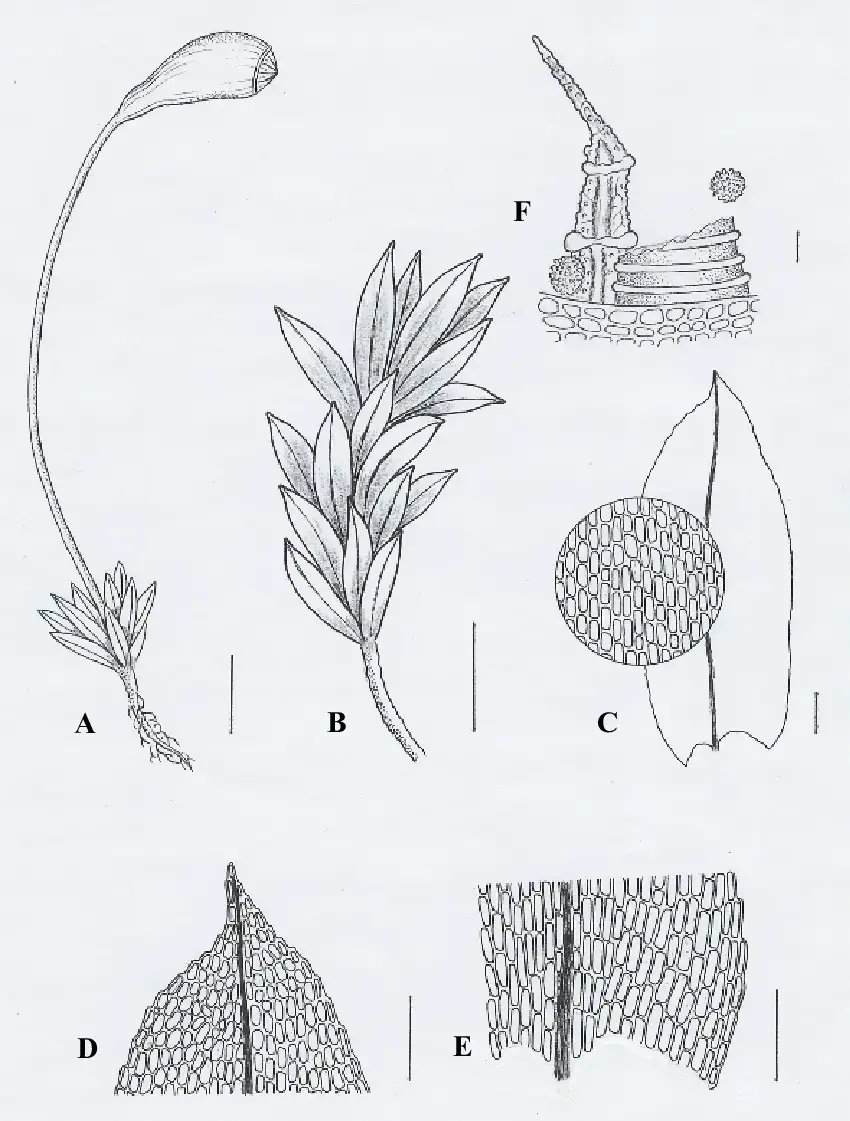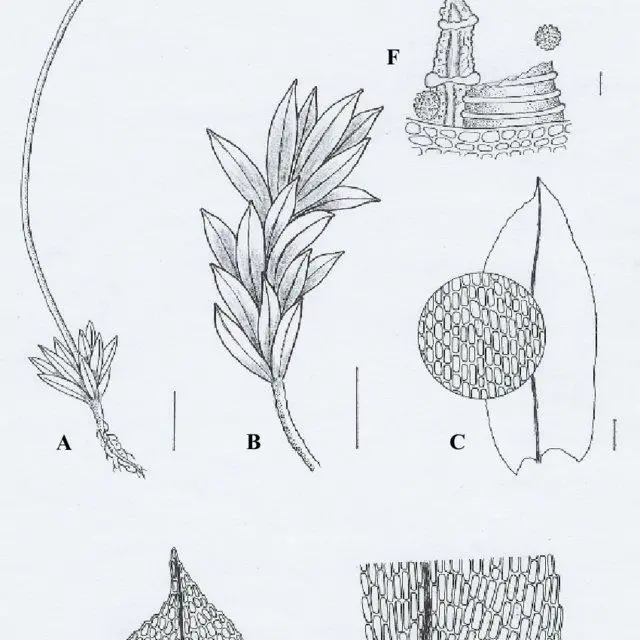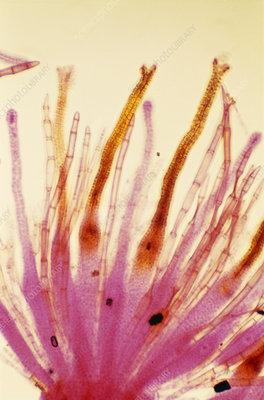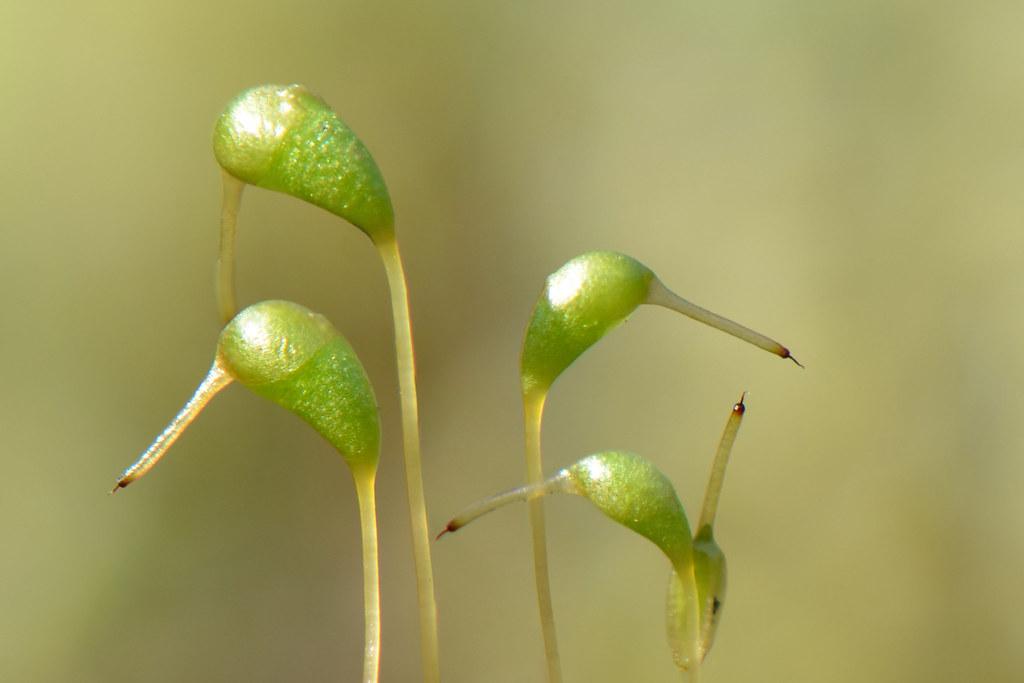
Funaria-microstoma-A-B-habits-C-leaf-showing-middle-cells-D-leaf-apex-E-leaf.png from: https://www.researchgate.net/figure/Funaria-microstoma-A-B-habits-C-leaf-showing-middle-cells-D-leaf-apex-E-leaf_fig1_258682952
Introduction
In the vast and captivating world of bryophytes, one tiny moss has captured the hearts of enthusiasts and scientists alike – the Funaria microstoma Bruch ex Schimp., commonly known as Funaria. This unassuming yet remarkable member of the Funariaceae family has been a subject of fascination for its unique characteristics and ecological significance.
Background
Before we delve into the intricacies of Funaria microstoma, it’s essential to understand the broader context of bryophytes. These non-vascular plants, which include mosses, liverworts, and hornworts, are often overlooked but play a crucial role in various ecosystems. They are among the oldest land plants, dating back to the Paleozoic era, and have adapted to thrive in diverse environments.
Main Content

Funaria-microstoma-A-B-habits-C-leaf-showing-middle-cells-D-leaf-apex-E-leaf_Q640.jpg from: https://www.researchgate.net/publication/258682952_Funaria_microstoma_a_new_species_for_Iranian_bryoflora
Morphology and Identification
Funaria microstoma is a small, acrocarpous moss that forms dense tufts or cushions. Its leaves are lanceolate to ovate-lanceolate

C0175677-Funaria.jpg from: https://www.sciencephoto.com/media/538102/view/funaria
, with a distinctive midrib that extends into a hair-like awn. The sporophytes are easily recognizable, with a curved, pear-shaped capsule supported by a

8539495977_f1d3217ffc_b.jpg from: https://www.flickr.com/photos/tabtannery/8539495977/
long, twisted seta. This unique capsule shape has earned Funaria the nickname “cord moss.”
Global Distribution and Habitat
Funaria microstoma is a cosmopolitan species, found on every continent except Antarctica. It thrives in disturbed areas, such as recently burned or cleared sites, gardens, and even urban environments. This moss is a true pioneer, often one of the first colonizers of bare soil or newly exposed substrates.
Ecological Roles and Adaptations
Despite its diminutive size, Funaria microstoma plays a vital role in ecosystem recovery and soil formation. Its ability to rapidly colonize disturbed areas helps stabilize the soil and create a suitable environment for other plants to establish themselves. Additionally, the moss contributes to nutrient cycling and provides a microhabitat for various invertebrates and microorganisms.
One of the remarkable adaptations of Funaria microstoma is its desiccation tolerance. This moss can survive prolonged periods of drought by entering a state of dormancy, only to revive and resume growth when moisture becomes available again. This resilience allows it to thrive in environments with unpredictable water availability.
Case Studies/Examples
Funaria microstoma has been the subject of numerous scientific studies, particularly in the fields of bryology and ecology. One notable example is its use as a model organism for studying the effects of environmental pollutants on plant growth and development. Its sensitivity to certain contaminants makes it a valuable bioindicator for assessing air and soil quality.
Technical Table
| Characteristic | Description |
|---|---|
| Phylum | Bryophyta |
| Class | Bryopsida |
| Order | Funariales |
| Family | Funariaceae |
| Genus | Funaria |
| Species | Funaria microstoma Bruch ex Schimp. |
| Common Name | Cord Moss, Funaria |
| Growth Form | Acrocarpous, tufted or cushion-forming |
| Leaf Shape | Lanceolate to ovate-lanceolate, with a midrib extending into a hair-like awn |
| Sporophyte | Curved, pear-shaped capsule on a long, twisted seta |
| Habitat | Disturbed areas, recently burned or cleared sites, gardens, urban environments |
| Distribution | Cosmopolitan, found on every continent except Antarctica |
Conclusion
Funaria microstoma, the unassuming yet remarkable cord moss, is a true marvel of nature. Its ability to thrive in disturbed environments, its unique morphology, and its ecological significance make it a fascinating subject for enthusiasts and scientists alike. As we continue to explore and appreciate the diversity of bryophytes, Funaria serves as a reminder of the resilience and adaptability of life, even in the smallest of forms.
Ponder this: In a world where human activities constantly reshape landscapes, could the humble Funaria microstoma hold the key to understanding and facilitating ecosystem recovery?